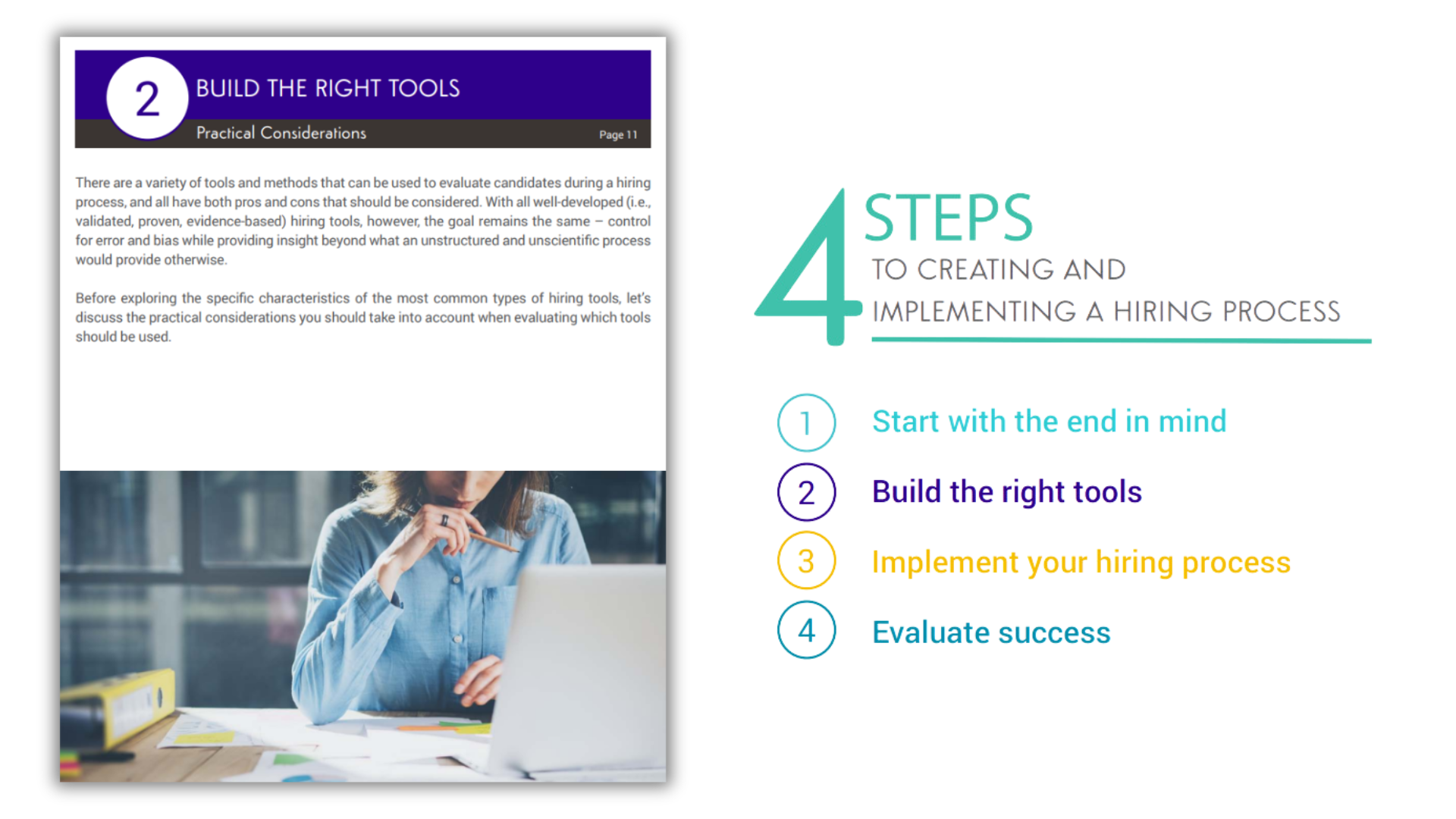You spent hours in meetings vetting assessment providers, comparing metrics, and gaining the buy-in of your team. The journey is now complete – you have a hiring assessment! What happens now? Assessments can transform your workforce by building high-performance teams aligned with your culture. But this can only happen if the assessments are soundly designed (predict key competencies for your positions and culture while providing a positive candidate experience), and appropriately and consistently used. We work intensely with our customers to ensure they have assessments that consistently identify candidates with the capability to meet expectations and support them with building an accurate and consistent hiring process around those assessments. Here are a few central guidelines for getting the most out of assessments and building a hiring process that saves time and consistently identifies quality hires.

Ensure All Candidates Are Evaluated by the Same Standards
The assessment is only one part of the hiring process and will only positively influence quality of hire if the results are applied consistently and appropriately across all candidates. What’s more, the legal defensibility of your hiring process hinges on consistency. Start by developing clear steps and standards for how managers will evaluate resumes and applications. If you are using an Applicant Tracking System, you may be able to automate parts of the application review and remove candidates who do not meet requirements based on their responses. Establish clear performance-related standards for all application questions, including work history, education, and certifications.
Next, how will hiring assessment results be used? While it’s strongly advisable for only candidates who pass all parts of the assessment to move forward in your hiring process, if you do permit flexibility at this stage, clear standards should be set for determining if candidates continue.
You can also work with managers to establish a set process for how and when to make use of all the information provided by the assessment results. For example, Corvirtus assessment results include probing questions, development information, and prioritized strengths and opportunities. Probing questions explore a candidate’s lowest scoring competencies allowing you to more accurately understand how the candidate could be derailed on the job. Development information can be considered in the final stages of the hiring process or used as tool to support new hires during training and onboarding. In establishing consistent standards and processes, it’s often advisable to seek input from the managers and team members who will be using the tools to ensure the process will be most useful for them. Then, develop and train managers on each step of the hiring process and provide both clear standards for using the overall result and the supplemental information about performance.
Monitor Key Metrics
Building a large pool of quality candidates is essential for increasing the potential of assessments to identify top talent. We’ve worked in competitive industries where attracting qualified candidates requires constant attention. We recently described several science-driven strategies you can use to build a large, high-quality talent pool. Make sure to monitor the size of your candidate pool for each department, region, and location to address any talent shortages before there is an urgent need.

It’s also important to monitor the pass rates for your assessments. We know pass rates may vary across regions, departments, or locations making it important to monitor each group to sustain an adequate candidate flow. While two positions may have similar competencies and use the same assessments and scoring, once you begin using the system, you may realize unique cut scores, or benchmarks, are needed. It’s also critical to monitor pass rates by protected class (e.g., gender, racial, or ethnic groups) to determine if the assessments are adversely impacting any one group.
Lastly, it’s crucial to measure compliance with the hiring tools and standards. By comparing onboarding records to assessment results, we can generate compliance reports to show how the tools are being used. Are managers hiring candidates who have not taken the assessments – or those who have not passed the assessments? This information is imperative as it can identify areas where your hiring process is consistently used.
Measure Return-on-Investment
Finally, one of the most important actions you can take is to gather concrete evidence of how the assessments are performing. This data can inform changes to your assessments and hiring process while also building commitment to using the tools from your managers and team.

Photo by Claudio Schwarz on Unsplash
We work with our customers to collect data on quality-of-hire, the overall efficiency of the process, and user perceptions. By looking at the relationship between candidate assessment results and new hire performance we can make targeted changes to the assessments – both what is measured and the specific benchmarks that are set for performance on the tests. By understanding candidate flow and how long each step of the hiring process takes, we can suggest ways the assessments, structured interviews, or recruitment materials could be adjusted to save time and decrease time-to-fill. User surveys are also powerful tools to determine ways to better support the success of managers using the tools – as assessments can be even more powerful when managers make full use of the information they provide.
Next Steps
In sum, hiring assessments provide evidence-based information about candidates with the potential to transform performance, culture-fit, and retention. To achieve these results, hiring managers must use the information provided by the assessments consistently and accurately. By setting and communicating clear standards, monitoring metrics, and measuring return-on-investment, you can support the success of your team while also gathering invaluable information to improve your hiring process even further.
Hiring is complicated and you might have even more questions about your hiring process than when you first started reading this blog! We compiled an eBook that walks through the steps of building a hiring process, the types of hiring tools and when to use them, and how to implement the process and evaluate its success. Hiring is truly a process – and by measuring each step you can continually improve your results and select quality hires who help your organization to flourish.





